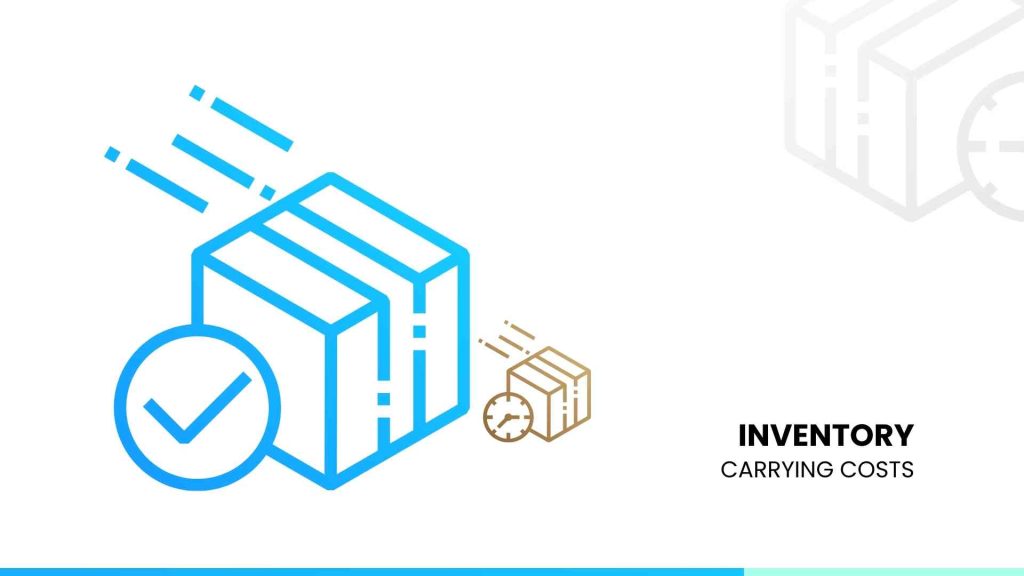In the business world, inventory management is a delicate balancing act. On the one hand, inventory is essential for ensuring product availability and customer satisfaction, but on the other, it represents a substantial financial commitment. The costs of holding and managing inventory are often hidden beneath the surface, quietly eroding profits and cash flow. These expenses, known as inventory carrying costs, are critical to understand and calculate accurately.
We explore the world of inventory carrying costs, exploring what they entail, how to calculate them, and, most importantly, how to optimize them to benefit your business’s bottom line. Whether you’re a small retailer or a large manufacturer, mastering inventory carrying costs is vital to achieving financial efficiency and long-term success.
What Are Inventory Carrying Costs?
Inventory carrying or holding costs are the expenses of having and storing inventory over a specific period. These costs can significantly impact a company’s profitability and cash flow. Inventory carrying costs generally include the following components:
Storage Costs: This includes rent or mortgage payments for warehouse space, utilities, insurance, and maintenance expenses. The larger the inventory volume, the higher these costs tend to be.
Capital Costs: The capital cost tied up in inventory is often calculated using the company’s cost of capital, such as interest rates or the return expected from alternative investments.
Insurance: Insurance costs are incurred to protect against theft, damage, or inventory loss. These costs can vary depending on the inventory value and insurance coverage.
Taxes: Some jurisdictions impose property taxes on inventory, which can be a significant carrying cost for businesses with large inventories.
Obsolescence and Spoilage: If products become obsolete or perishable, the carrying costs can increase due to losses from unsellable inventory.
Handling and Labor Costs involve receiving, storing, and managing inventory. Labor costs for inventory control personnel, forklift operators, and order pickers are included here.
Opportunity Cost: This represents the potential profit that could have been earned if the capital invested in inventory had been used elsewhere in the business.
Depreciation: Inventory can depreciate over time due to deterioration, changes in market demand, or technological advancements.
Calculating Inventory Carrying Costs
To calculate inventory carrying costs accurately, you’ll need to gather data and apply the following formula:
Inventory Carrying Cost = ( Storage Costs + Capital Costs + Insurance + Taxes + Obsolescence + Handling and Labor Costs + Opportunity Cost + Depreciation ) / Average Inventory Value
Storage Costs: Calculate the sum of all expenses associated with storing inventory, including rent, utilities, and insurance.
Capital Costs: Determine the cost of capital tied up in inventory, considering your company’s applicable interest rate or expected return on investment.
Insurance, Taxes, and Obsolescence: These costs can be estimated based on historical data and industry benchmarks.
Handling and Labor Costs: Calculate the labor cost of managing inventory, including wages, benefits, and other related expenses.
Opportunity Cost: Estimate the potential profit that could have been earned if the capital invested in inventory had been used elsewhere.
Depreciation: Assess the value lost due to factors like obsolescence or deterioration.
Average Inventory Value: Determine the average value of your inventory over a specific period (usually a year).
Optimizing Inventory Carrying Costs
Once you’ve calculated your inventory carrying costs, you can take steps to optimize them:
Demand Forecasting: Improve demand forecasting to reduce the risk of overstocking or understocking inventory.
Lean Inventory Practices: Implement lean inventory management techniques to minimize excess inventory.
Supplier Relationships: Negotiate favorable terms with suppliers to reduce order quantities and carrying costs.
Inventory Turnover: Strive to increase inventory turnover rates by selling products faster, which reduces holding times and associated costs.
ABC Analysis: Categorize inventory into A, B, and C categories based on value and prioritize management efforts accordingly.
Just-in-Time (JIT) Inventory: Adopt JIT practices to minimize the need for excessive inventory levels.
Stock carrying costs are a significant aspect of any business’s financial health. Understanding, calculating, and optimizing these costs is crucial for maintaining profitability and efficient cash flow management.
By reducing stock carrying costs, businesses can operate more efficiently, improve customer service, and invest resources in areas that drive growth and innovation. Acumatica emerges as a powerful ally in enhancing inventory management for businesses across industries. Its robust features, real-time insights, and scalability provide a comprehensive solution to maintaining optimal inventory levels, minimizing carrying costs, and ensuring seamless operations.
By leveraging Acumatica Cloud ERP‘s capabilities, companies can gain a competitive edge, streamline their supply chains, improve customer service, and ultimately drive profitability. Acumatica is a valuable tool that empowers organizations to survive and thrive in a dynamic business landscape where efficient inventory management is paramount. Feel free to reach out to us for a tailored ERP solution.

Vijay comes with a vast experience in ERP and enterprise solutions space with about 20 years of experience in various packaged application like Acumatica, SAP, Orion, Salesforce.com, SugarCRM and, SalesLogix.

